Note to self: shortcuts: < > ctrl-= alt-w
Meanwhile, I think an instructable a week sounds like an excellent plan for Spring semester senior year.
Note to self: shortcuts: < > ctrl-= alt-w
Meanwhile, I think an instructable a week sounds like an excellent plan for Spring semester senior year.
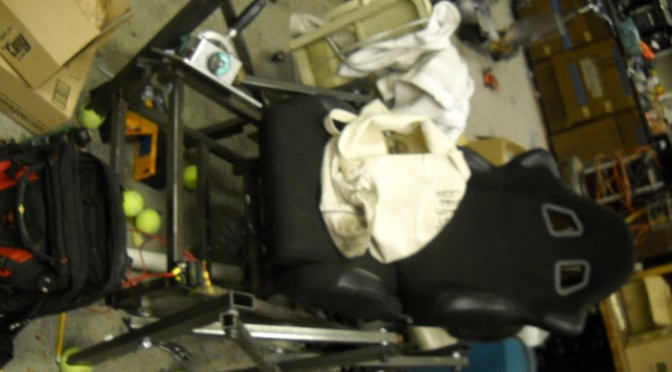
just an update to say no, i did not successfully make a motor controller in 48 hours 🙂
(see previous post for schematic: http://www.orangenarwhals.com/?p=152)
what was it? a 6.131 final project / motor controller for hexarideablepod (derived off of an instructables):
which works, but uses an arduino and two victor speed controllers — total overkill. also, terrible UI: it uses a hard to reach switch for fwd/bwd and foot pedals, which little kids have issues reaching even with the awesome!adjustable-car-seat.
| block diagrams! ewww. |
https://github.com/nouyang/hexapodtroller for the eagle sch/brd. You can see terrible routing here:
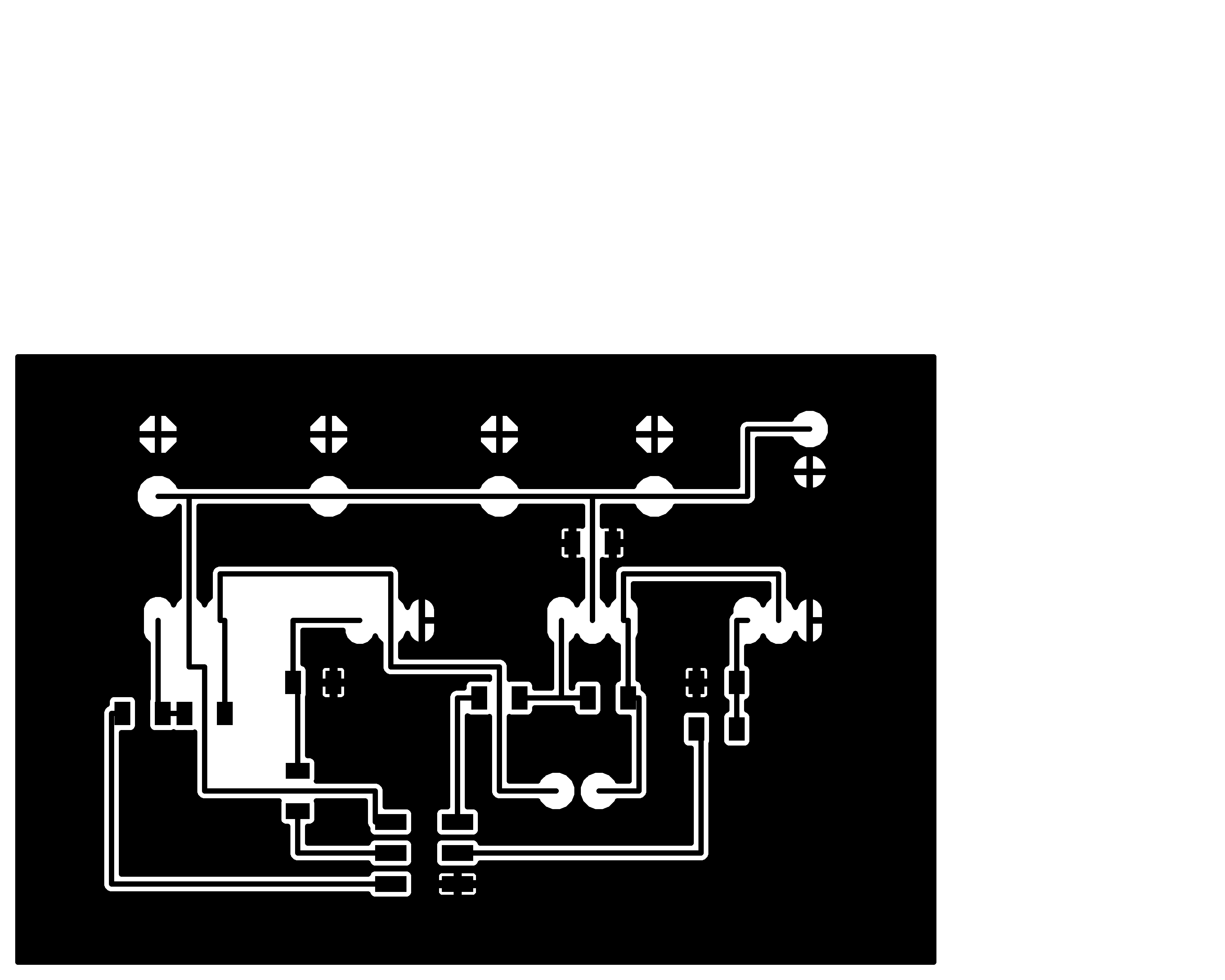 |
| power board (4 FETs to make a full H-bridge) |
 |
speed routing and my inexperience led to use of 24 zero ohm resistors and I still used a jumper 🙂
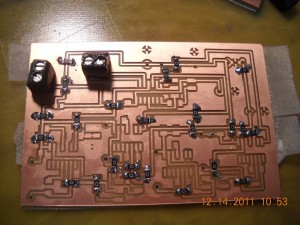 |
| hai zero ohm resistor friends |
I create zero-ohm resistors a dumb way that actually turns out to be helpful when populating a lot of them. Since they each have an air wire, I can set air wires to a nice contrasting color and see where they all are:
Another note, I milled out the moles CNC-ly too using GIMP to get the traces I needed, but :/ milled them out too small and had difficulty getting the 3.5mm spacing power connectors to go through the board — had to carefully use a vise.

A few friends and I are thinking of working on an open source everything [1] project over IAP (January).
Some research into people working on similar projects:
======
Many links from: http://news.ycombinator.com/item?id=3276596
======
http://www.kickstarter.com/projects/supermechanical/twine-listen-to-your-world-talk-to-the-internet
Twine — Cambridge, MA
~$100, automation oriented web app, 3 sensors, wifi connected. (oh hai mit media lab people o.o)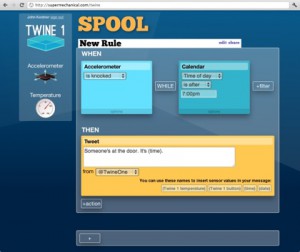
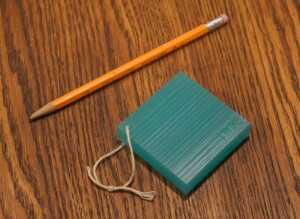
======
GreenGoose
http://greengoose.com/learn
whoa sticker sensors! eeeeee!
ethernet base station, 250+ feet range, probably in $100+ closer to $200 range
tedx towatch http://www.youtube.com/watch?v=evKoXorLhqI
======
http://postscapes.com/companies IoT company listings
http://ifttt.com/wtf software only
======
SPOTS
http://java.net/projects/spots/pages/Home older SPOTS, not commercial (educational)
“small, Java-based, wireless devices developed at Oracle Labs. The SPOTs project is the place on java.net for development of open source code relating to Sun SPOTs. This includes system code, application frameworks, demonstrations, and applications.”
======
Rascal — Somerville, MA
http://rascalmicro.com/
$100+ (close to $200) open source hardware FTW! ^^ From the frontpage:
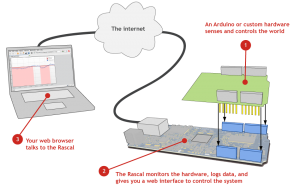 |
| Basically takes care of talking to internet, web GUI, and data logging for your arduino-connected sensor |
Can I steal the design?
I’m giving you the design, so no, technically you can’t steal it. If you want to make your own version of the Rascal under a different name, or use it in a commercial product, go ahead. Seriously, do it. I’ll never saturate the market for devices like the Rascal, and I’m already working on the next design anyway. asdfjhadf yay oshw
=====
https://code.google.com/p/pubsubhubbub/ idk what are this. pushing atom/rss updates instead of making scripts constantly poll?
=====
Mbed
http://mbed.org/handbook/Tour — makes experimenting with microcontrollers easier
=====
TinkerKit
educational, <$50 range for sensors (requires Arduino, not designed with connecting to Internet in mind?)
http://store.arduino.cc/ww/index.php?main_page=index&cPath=16&sort=20a&page=2
=====
Grove Easy Prototyping Series
http://www.seeedstudio.com/depot/index.php?main_page=advanced_search_result&search_in_description=1&keyword=grovefamily
=====
None of the sensor platform-y ones are open source hardware, though. Or designed with the intent of enabling people to modify and extend the sets of sensors. >__> bwahahaha
Our idea doesn’t actually fall into “internet of things” because (at least initially) we’re aiming for Really Cheap ($10 or less a sensor).
Thoughts: conflict, we want lots of data so we’re aiming for inexpensive sensor boards and part of the cost-savings is not having wireless capability on each board. But that implies we want people to get lots of sensors (yay more data to crunch and visualize!), which means that’s a lot of data to read manually (will people have the patience? Perhaps it’d be like watering plants — not everyone is cut out for it)
My hope is that in two weeks, when we get to wireless networks in MAS.863, I will have the magic. See: http://fab.cba.mit.edu/content/tools/circuits/network_transport/
=====
More on the business-y side:
http://www.readwriteweb.com/archives/top_10_internet_of_things_developments_of_2010.php
nice infographics: http://www.readwriteweb.com/archives/cisco_50_billion_things_on_the_internet_by_2020.php
nice graphical overview of IoT idea and potential: http://wwwen.zte.com.cn/endata/magazine/ztetechnologies/2010/no5/articles/201005/t20100510_184418.html
Economic-y Research Reports
http://www.thehammersmithgroup.com/images/reports/networked_objects.pdf
http://www.mckinsey.com/mgi/publications/internet_matters/pdfs/MGI_internet_matters_full_report.pdf
http://laurielamberth.com/2010/09/chattering-objects-economist-covers-lamberths-internet-of-things-research-report/
=====
[1] (everything as in: hardware (schematic to gerber files), possibly our applications for various funds, software (data visualization), firmware (microcontroller code), businessware (using os shopping cart software like prestashop or zencart), research), documenting everything not just the final product — everything we learned and fixed)